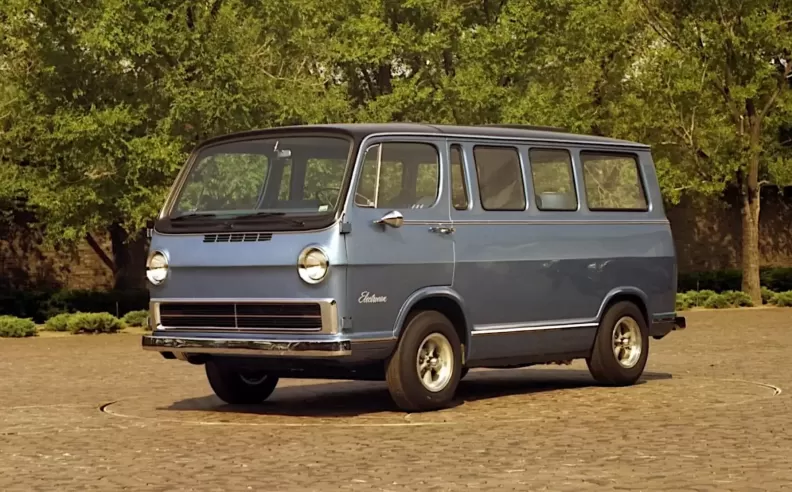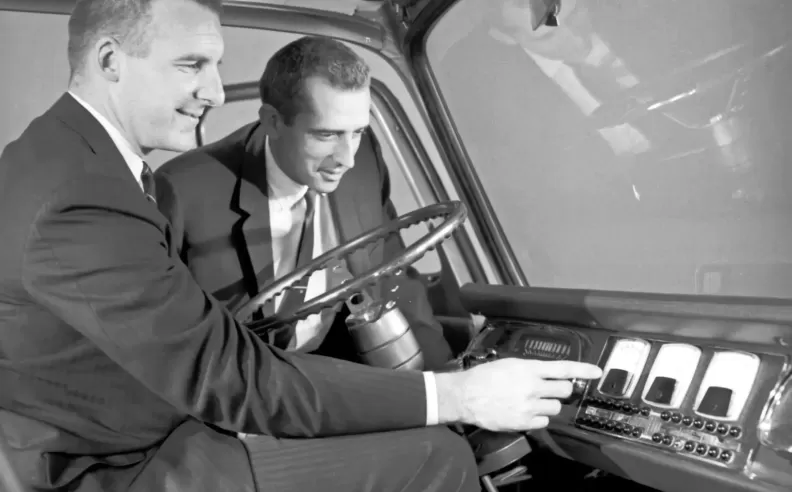
Back in the 1960s, while most automakers were still clinging to gasoline engines, General Motors was already playing with hydrogen fuel cell tech that would not become mainstream for decades. The company’s experimental Electrofvan wasn’t just bold, it was groundbreaking. It combined lunar-inspired innovation with forward thinking in energy, even though the final product was far from practical. Here’s how GM’s Electrofvan helped shape the future of hydrogen mobility.

General Motors took a cue from NASA, which had just used hydrogen fuel cells to power the Apollo moon missions. These fuel cells generated electricity from a chemical reaction between hydrogen and oxygen, producing only water and heat as byproducts. GM wanted to replicate this success on Earth. But the company quickly realized that fitting this tech into a conventional car was impossible at the time. Instead, they turned to the larger Electrofvan, a van based on their Corvair Greenbrier, to house the bulky equipment.
Despite removing most of the passenger space, the van still weighed 3,220 kilograms, including 1,770 kilograms of fuel cell gear. That made it even heavier than most modern electric vehicles (except the Hummer EV, of course). GM’s engineers squeezed everything inside, from fuel tanks to compressors, but the result was a van with only two seats and zero cargo room.

Despite the impressive science behind it, the Electrofvan simply wasn’t ready for the real world. It could accelerate from 0 to 96 kilometers per hour in about 30 seconds, a figure that matched the original van’s gas engine, but felt extremely sluggish. The projected driving range was 240 kilometers, which sounded decent, but was never tested on public roads.
The reason? Safety concerns. One of the compressed hydrogen tanks exploded during a trial, sending metal fragments flying over 400 meters. That alone was enough to make the project too risky for mass adoption. Still, it proved one thing: hydrogen could work, just not yet.
Even though the Electrofvan never made it to production, it marked the first time a fully fuel cell powered vehicle hit the road. More importantly, it planted a seed for GM’s future. Today, the company is once again exploring hydrogen fuel, especially for heavy duty vehicles where battery packs are too heavy or inefficient.
GM’s current hydrogen division, Hydrotec, focuses on applying modern fuel cell units to industrial trucks and mining machines. These setups are more compact and use air from the environment instead of bulky onboard oxygen tanks. It’s a cleaner, safer, and more practical version of what GM dreamed up nearly 60 years ago.
In hindsight, the Electrofvan was never about immediate success. It was about pushing boundaries, experimenting with tech that could someday become essential. And now, in the era of zero emissions and climate commitments, that bold thinking is finally paying off.

Started my career in Automotive Journalism in 2015. Even though I'm a pharmacist, hanging around cars all the time has created a passion for the automotive industry since day 1.